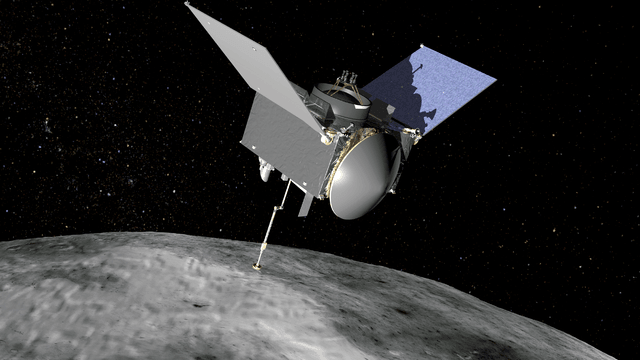NASA’s OSIRIS-REx spacecraft is scheduled to reach the asteroid Bennu today. OSIRIS-REx will land on the large asteroid, study its composition and collect a rock sample to take back to Earth. NASA will broadcast the event today at around 12 p.m. Eastern.
NASA will host a live event from about 11:45 a.m. to about 12:15 p.m. Eastern. You can watch the the landing live on NASA TV, NASA’s Facebook Page, Ustream or YouTube. Before the official event, NASA will host a preview program starting at 11:15 a.m. Eastern.
The OSIRIS REx (Origins, Spectral Interpretation, Resource Identification, Security Regoliath Explorer) spacecraft was originally launched in September 2016 and sent on a mission to explore the asteroid Bennu. NASA has posted several updates as the spacecraft traveled to its target.
Once the spacecraft reaches the asteroid‘s orbit, it will begin to gather data on its physical and chemical properties. OSIRIS-REx will then land on Bennu and collect a rock sample which will be sent back to Earth in a small return capsule. The survey mission will last about a year until the spacecraft reaches a good place to collect a sample.
The capsule will sent back to Earth, where it will be dropped through the atmosphere in free fall.
Once the capsule reaches an altitude of 20.8 miles, its parachute will open and guide the sample down to to Earth’s surface. The rock is expected to land somewhere in the Utah desert on Sept. 24, 2023.
There are several reasons NASA sent a spacecraft to reach the asteroid Bennu. The space agency believes asteroids with Bennu’s chemical composition are important because such asteroids may have brought the building blocks of life to Earth. Scientists believe asteroids like Bennu carried organic material which was crucial for life as we know it today.
The asteroid Bennu could also prove to be hazardous for Earth — but not for more than a century. NASA predicts that around Sept. 23, 2135, the asteroid could collide with Earth.
Astronomers estimate this massive space rock to be roughly the size of the Empire State Building. However, if NASA develops equipment which can destroy the asteroid before then, there’s no reason to be scared.












